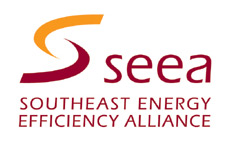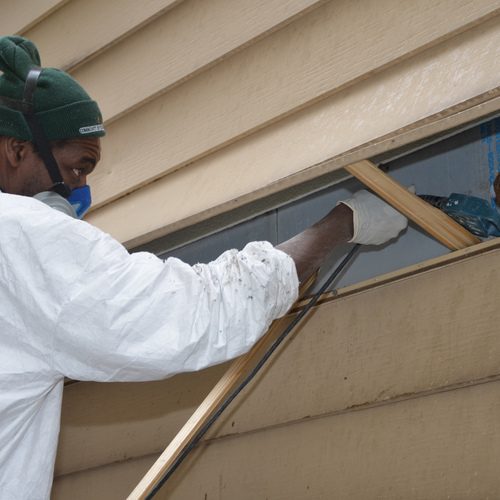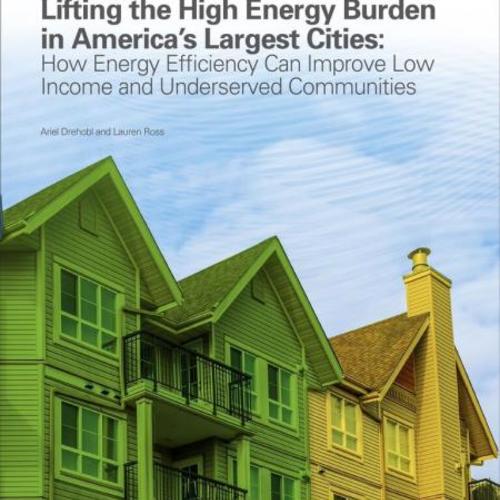
I recently attended a small, one-day meeting in Atlanta of individuals and organizations involved in energy efficiency throughout the southeast U.S. Hosted by SEEA, the Southeast Energy Efficiency Alliance, the group responsible for distributing much of the ARRA money for efficiency throughout the region.
Along with the typical discussions of successes and challenges (or failures) in the region, there were a few standard utility company party-line comments and, somewhat surprisingly, a few off-the-wall comments that suggested a little bit of revolutionary thinking going on in the industry.
Opening act: the sky is falling
The morning keynote address was given by Dr. Marilyn Brown of Georgia Tech and Oak Ridge National Laboratory, who is the author of too many books and reports on energy to mention. Although her slides were almost illegible, she presented some pretty frightening statistics including her calculations that we have used up our carbon budget and only have about five years left to change our direction before climate change takes an irreversible course to someplace we don’t want to go.
Since 2005, per capita U.S. energy use has decreased, primarily because the most energy-intensive industries are now mostly in other countries.
Finally, addressing our regional audience, the southeast US has about 36% of the country’s population but uses 44% of total energy generation. What a lovely way to start the day.
Rethinking public policies
The most interesting information came out of two panel discussions. The morning session included a discussion of how public policy affects energy industry decisions. The moderator started with a review of current public policy: Electric utilities should produce reliable power at the lowest cost to the consumer; and a potential alternate policy to consider: Electric utilities should produce reliable power at the lowest cost to the environment. Kind of mind-blowingly simple concept, but changing core public policy is not easy, especially when it would likely increase energy costs to the end user.
There was a good discussion on renewable energy standards, few of which currently exist in the southeast. North Carolina, one of the few states with a standard, is required to provide 12.5% of its energy from renewable sources by 2021, which has been calculated to cost $34 annually per household – a surprisingly reasonable cost.
One panelist suggested that utilities should just charge all their customers for efficiency programs and then ask them if they want to take advantage of them. There’s something about that idea that appeals to me.
There was a good discussion of how to effectively finance energy efficiency programs, including on-bill financing. It was pointed out that nationally, the default rate on power bills is 3/10 of 1% – seems like a great place to finance energy efficiency and renewable energy projects.
A discussion of time-of-use dynamic pricing was interesting. Some utilities that have tried it were not successful because customers didn’t want to think about it. The consensus was that customers don’t want to make decisions on their power purchases.
Duke Energy found that dynamic pricing led to overcharging for peak and undercharging for off peak power to provide enough incentive for customers to change their behavior. Utility managed controllers on HVAC and water heating equipment tends to work better to reduce peak loads.
Getting efficiency done
The afternoon panel included the director of the Charlottesville, Virgina, efficiency program; a developer from New Orleans; the Nashville, Tennessee director of sustainability; and a representative from Duke Energy, discussing the challenge of financing energy efficiency improvements.
New Orleans has a program (supported by grant money) that provides financing for less than 4%. Non-subsidized loan programs find it almost impossible to get rates below 6%, due to administrative costs on small loans.
Duke Energy threw out one of the best wild ideas of the day – a concept they are working on but have not yet implemented – offering a fixed monthly total bill to their customers based on historical costs. Not a fixed rate, but an actual fixed amount they will pay per month. They believe that it is possible to calculate a figure for each customer that will allow them to include the cost of performing efficiency improvements to a building in a monthly bill while still making a profit and lowering demand. If utilities were to do this, they would have an incentive to do improvements that really work, as they would benefit directly from good work and suffer from poor work.
Probably my favorite comment of the day came towards the end of the afternoon panel. It was suggested that utilities should be able to withhold energy from inefficient buildings to help cut demand and incentivize people to improve their efficiency. Now, I don’t think anyone was seriously considering implementing this policy, but it was refreshing to hear uncensored, creative thinking, particularly from usually staid utility companies. I hope that some of the wild ideas I heard help move things forward in the not-too-distant future.
Weekly Newsletter
Get building science and energy efficiency advice, plus special offers, in your inbox.















6 Comments
Interesting meeting
It sounds like the SEEA meeting was interesting and insightful. Although it may have opened with some startling facts, its facts like that which will help to (slowly and eventually) get others to take things seriously. The Duke Energy pricing concept certainly sounds like it could be effective, on the utility side. While the utility may benefit from making improvements to their system, there doesn't seem to be an incentive to the customer to reduce their own energy consumption. With some tweaking, this program could be great.
The sky isn't falling...
We're just quickly running out of time.
Tiered Utility Rates
CenterPoint Energy tried tiered residential natural gas here in Minneapolis this past year, I thought it was great. It lasted less than 1 year and I am not sure why.
The start; http://www.startribune.com/business/yourmoney/113143154.html?page=all&prepage=2&c=y#continue
The finish; http://www.ag.state.mn.us/Consumer/PressRelease/110601Centerpoint.asp
With the modest energy efficiency improvements we have made over the years on our 1978 house the tiered natural gas pricing would have worked nicely. This is how the tier was for January 2011
0 - 30 therms usage .40867
31 to 110 therms .57625
111 to 165 therms .72286
166 to 200 therms .75131
Over 200 therms .80131
Our usage for December 14 to January 14 was 145 therms, 30 therms would be priced at the lowest tier, 80 therms at the second tier and 35 therms in the middle tier.
It might be falling
Yeah we've got five years left, if we use 2 degrees Celsius as the upper limit for warming. But The 2 degree Celsius limit was a political compromise and the science is saying the limit is more like 1.5 degrees Celsius of warming(1, 2) otherwise were hooped and the kids are...
Since we have already warmed about one degree Celsius, at best it will be nip and tuck.
Here's a good review of this year's IEA World Energy Outlook that points out that we only have five year's left to get on top of things.
And if you want to read the IEA's press release and executive summary, it's here
Droughts impacts on energy
Some electricity generation facilities need lots of water!
Not literally falling...
The WEO 2011 is great because - finally - a well respected, mainstream agency (the IEA) is spreading the word that we've got an emergency situation on our hands.
However, it may be that as gloomy as the IEA's estimates are, they are still overly optimistic.
As far as I have been able to determine the IEA has not factored "external" (non-athropogenic) sources of GHG emissions into their estimates.
This point is salient in light of recent news of unexpectedly high volumes of methane escaping from thawing artic permafrost.
If the "arctic methane release" ball gets rolling - as it seems to be doing - it is unlikely that any attempt at mitigating anthropogenic GHG emissions will have any effect on the "run-away" effects that will ensue.
Log in or create an account to post a comment.
Sign up Log in